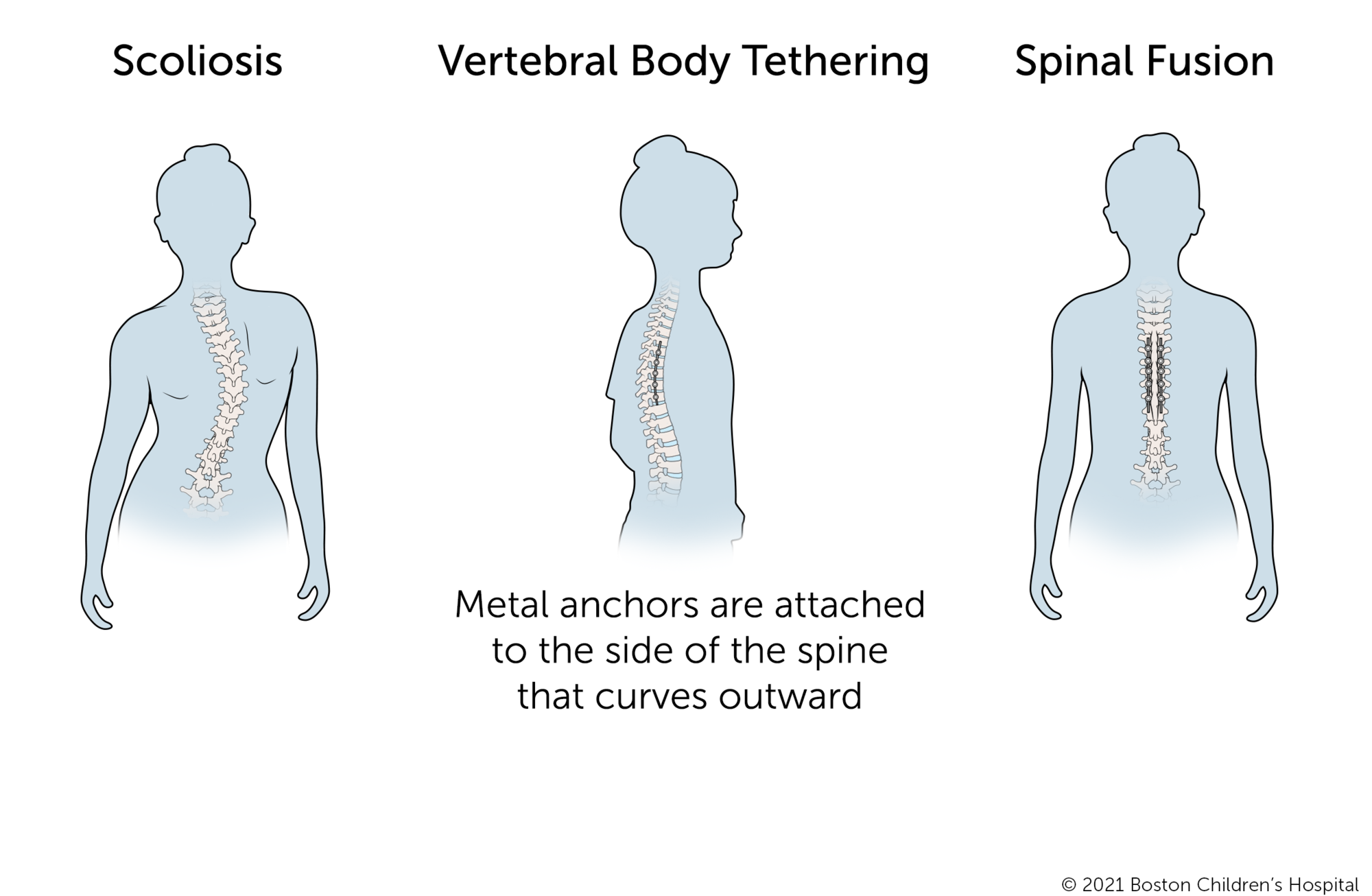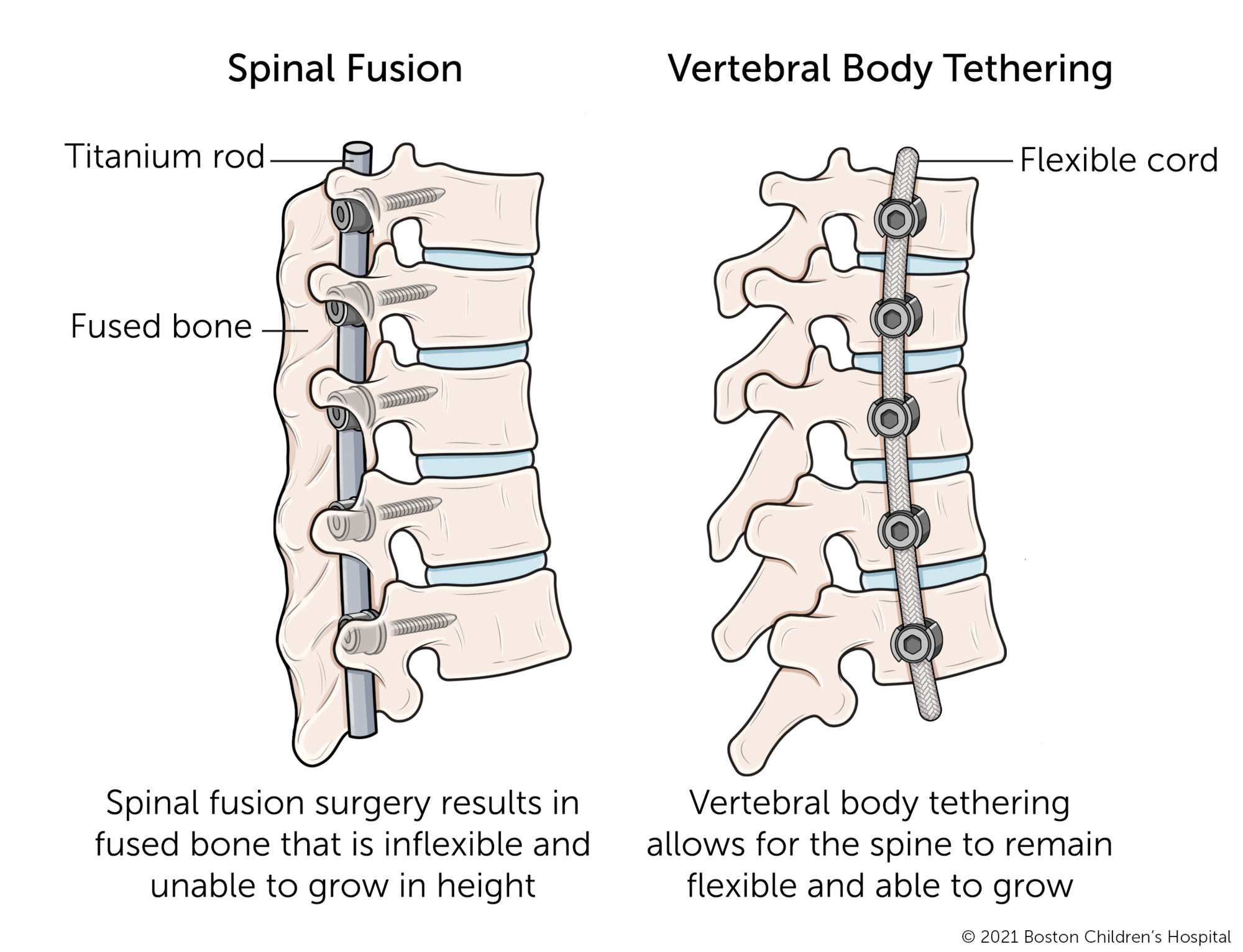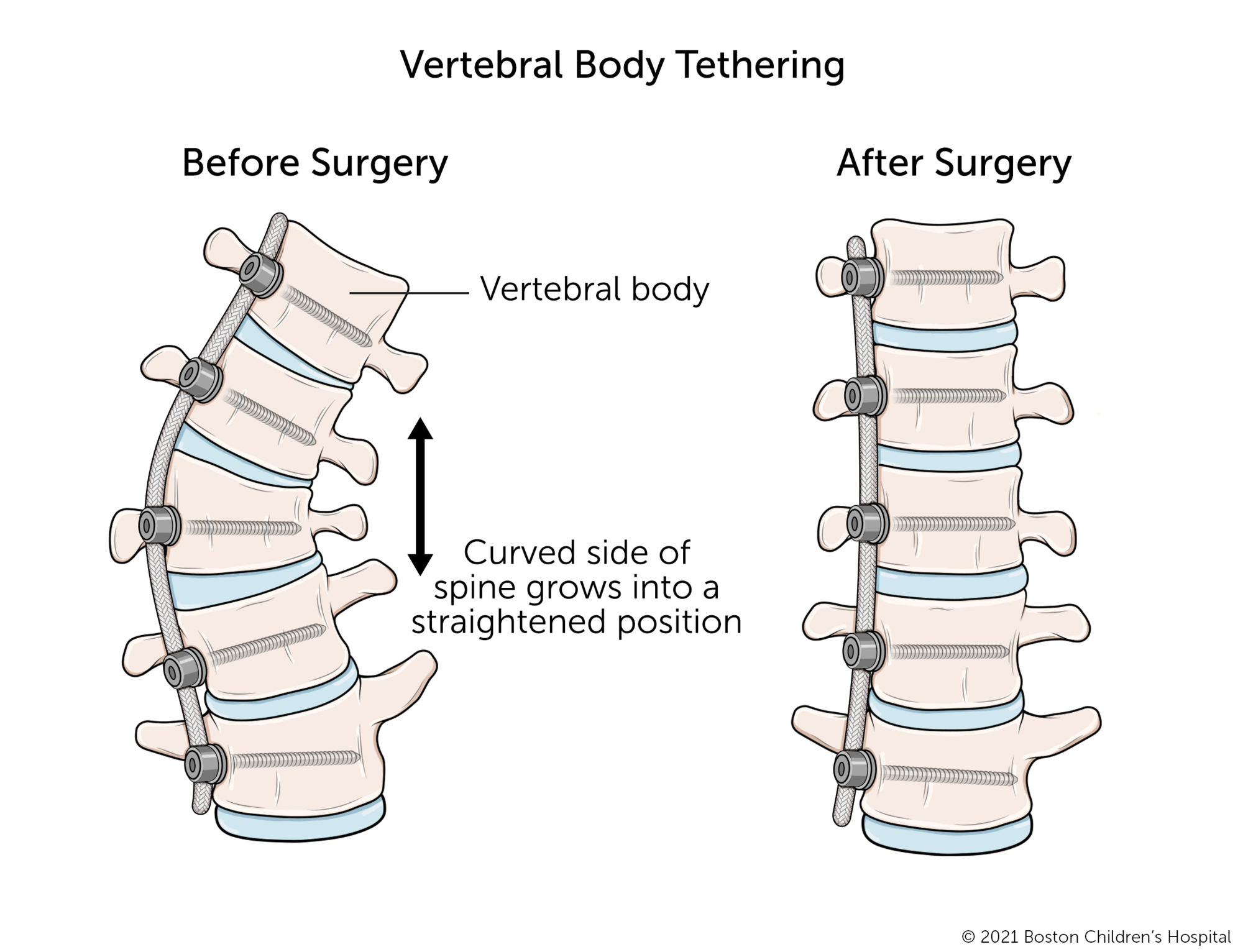What is vertebral body tethering?
Vertebral body tethering (VBT) is a surgical treatment for idiopathic scoliosis in growing children whose scoliosis continues to progress despite bracing. The treatment was approved by the FDA in August 2019.
This “growth modulation" treatment uses anchors and an attached flexible cord to guide the spine into an upright alignment as a child grows. Vertebral body tethering can be used instead of spinal fusion surgery for some children with idiopathic scoliosis.
How does vertebral body tethering work?
Vertebral body tethering takes advantage of the spine’s natural growth to correct sideways curvatures while allowing the spine to continue growing.

Surgeons attach metal anchors to the vertebrae on the side of the spine that curves outward. A flexible cord, called a tether, is connected to these anchors and placed under tension. Over time, as the child continues to grow and their spine lengthens, the tether slows the growth on the curved side of the spine. This allows the other side of the spine to catch up. Over time, as a child grows, the spine grows straighter.
The anchors and tether will remain attached to child’s spine permanently unless problems develop.
What is the difference between vertebral body tethering and spinal fusion surgery?
Compared to spinal fusion surgery, vertebral body tethering allows for greater spine mobility and flexibility. As the name implies, after spinal fusion surgery, the affected vertebrae fuse into solid bone. This section of spine will not bend or grow beyond its height at the time of surgery.

Vertebral body tethering preserves the flexibility of the spine and allows for continued growth.
Vertebral body tethering is a new treatment that has shown promising early results. However, the long-term success rate is not yet known. Surgeons have performed and refined spinal fusion surgery for decades with a high rate of success.
Is vertebral body tethering an option for my child?
Vertebral body tethering is a surgical option for some children with idiopathic scoliosis whose spinal curves have not improved with bracing or who can not tolerate bracing.
After a thorough examination and medical history, our surgeons will talk with you about the pros and cons of a variety of treatment options. The following facts about VBT will help determine if it is an option for your child:
- Because VBT corrects scoliosis by guiding the growth of the spine, it is only effective in children who have not yet reached their mature height.
- Children must have strong enough bones to support the anchors that will be attached to their spines.
- Although every child is different, the majority of kids who undergo this procedure are between ages 8 and 16.
- Children with curves less than 45 degrees are at risk of overcorrection (spine curves in the opposite direction) with this procedure.
- The procedure is not as effective on curves greater than 65 degrees.
- Vertebral body tethering is indicated mainly for children with idiopathic scoliosis that is not related to neurological conditions or another deformity or injury.

How soon will my child be able to return to school and sports after vertebral body tethering?
Typically, children stay overnight at the hospital for two to three days after vertebral body tethering. Many return to school one to three weeks after the procedure and return to normal activities after six weeks.
To learn more about vertebral body tethering or other treatments for idiopathic scoliosis, contact our Spine Division.
Vertebral Body Tethering | Programs & Services
Programs
Spine Division
Program
The Spine Division provides comprehensive care for scoliosis and other spinal conditions.
Centers
Orthopedic Center
Center
Established in 1903, we are one of the world’s most experienced pediatric orthopedic centers. Learn more.

